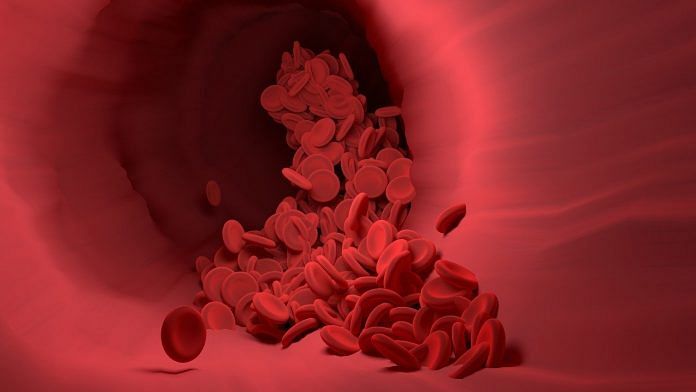Sol Schulman, a hematologist at Beth Israel Deaconess Medical Center, wrote recently to tell me about some new clues to an ominous connection emerging between Covid-19 and strokes. The new clues came from autopsies.
These autopsy studies used only a few subjects — 11 in one and 14 in another. Why so few when there are hundreds of thousands of people around the world dying from Covid-19? Experts say the once-standard practice had declined before the pandemic as paperwork and consent become more burdensome. Now extra precautions are needed to protect the pathologists from infection.
But the few autopsies that have been done have revealed that Covid-19 is no ordinary respiratory disease. The virus is killing people by ravaging the circulatory system.
To discover new treatments to test, researchers need to know more about how the disease works. Some of that can be done through clinical trials on the living; but scientists can learn a lot from those who’ve succumbed to the virus.
And this one, they’re finding, is very different from the flu. The difference was becoming apparent in early April. Doctors were reporting that some patients appeared to be breathing freely while their bodies were alarmingly starved of oxygen. They’d never seen anything like it except in patients with extreme altitude sickness.
Doctors I spoke with back then thought something was wrong with the blood vessels that were transporting oxygen from the lungs. Scientists had recognized that so-called ACE2 receptors, which let the virus into cells, are present in the endothelial cells, which line the blood vessels and regulate clotting.
Then, later in April, the New England Journal of Medicine published an alarming set of case studies of five Covid-19 positive patients who suffered strokes. All were under the age of 50. One tragic irony was that some had been too scared of getting Covid-19 to go to the hospital for treatment. They had no idea they already had the virus, let alone that it might be responsible for their symptoms.
“We’ve been continuing to collect data on stroke patients and we’ve learned a lot more about the way Covid-19 is causing clots in other parts of the body,” says Johanna Fifi, a neuroendovascular surgeon at Mount Sinai Health System and an author of that article. The clots are also found in the lungs and kidneys. “Clotting seems to be a very prominent feature of this disease,” she says.
“This is causing more thrombosis than any other virus,” says Pascal Jabbour, a physician at Thomas Jefferson University Hospital. “We’ve never seen that before.” Jabbour has also been collecting data on stroke patients and has found that Covid-19 positive cases are not only younger, but are also less likely to survive after the usual surgical treatment to remove clots. The mortality rate is about 43%, as opposed to about 5% in typical cases.
Schulman says evidence is growing that Covid-19 is affecting blood vessels in people with no obvious symptoms of stroke or blood clots. People with severe Covid-19 have an off-the-charts elevated blood marker, called D-dimer, which is associated with blood clots. Levels of about 500 signal a serious clot risk, but patients with severe Covid-19, he says, “show the highest numbers most of us have ever seen.” The D-dimer tests only measure levels up to 22,000 — and many patients are clearly beyond that.
Also read: Coronavirus isn’t getting weaker, it’s just that we’re fighting it better
Now, thanks to people who’ve donated their bodies to science, doctors are getting a better look at what’s happening. One paper, published in the Annals of Internal Medicine, chronicled the autopsies of 11 randomly selected Covid-19 patients. There was evidence of pulmonary arterial thrombosis — blood clots — in all 11 of them. None had been diagnosed with a clot while they were alive.
The fact that these people were randomly chosen is significant, Schulman says. What researchers are seeing in Covid-19 patients looks different from what they see in patients suffering from run-of-the-mill strokes or blood clots in the lungs. In the deceased Covid-19 patients, the blood clots appeared to have formed within the lungs themselves, while more typically they’d form elsewhere, break off and end up in the lung. Moreover, in the Covid-19 patients, it was tiny vessels that were blocked – not the major highways (as in typical strokes), but the footpaths.
Another autopsy study published in late May in the New England Journal of Medicine compared seven patients who died from Covid-19 to seven who died from the H1N1 flu. In those who died from Covid-19, the damage to the cells lining the blood vessels was many times more extensive.
Schulman says this might be caused by the virus itself, or by the immune system overreacting as the body tries to fight off the virus. The immune system is intertwined with the blood clotting system. Clotting is, he explains, a primitive immune reaction by which an animal is equipped with enzymes that can turn the blood to gel, to essentially throw up a barrier to invading bacteria.
An immune overreaction, sometimes called a cytokine storm, is likely involved, agrees Jabbour. One consequence of such an overreacting is the release of proteins known for regulating the coagulation system. That may also explain the circulatory problem that causes discolored “Covid toes” as well as the inflammatory reaction they’ve seem in some children, similar to a disease called Kawasaki Syndrome.
The new understanding of the vascular side of this virus has already changed standard treatment. Many patients are now getting blood thinners as part of their treatment and others are being enrolled in clinical trials to test the efficacy of these drugs. To keep learning more about this disease and how to treat it, the doctors not only need more time, they will need more studies of all kinds — both on the living and those who’ve been lost.-Bloomberg
Also read: We shouldn’t assume there will be a post-Covid-19 era



